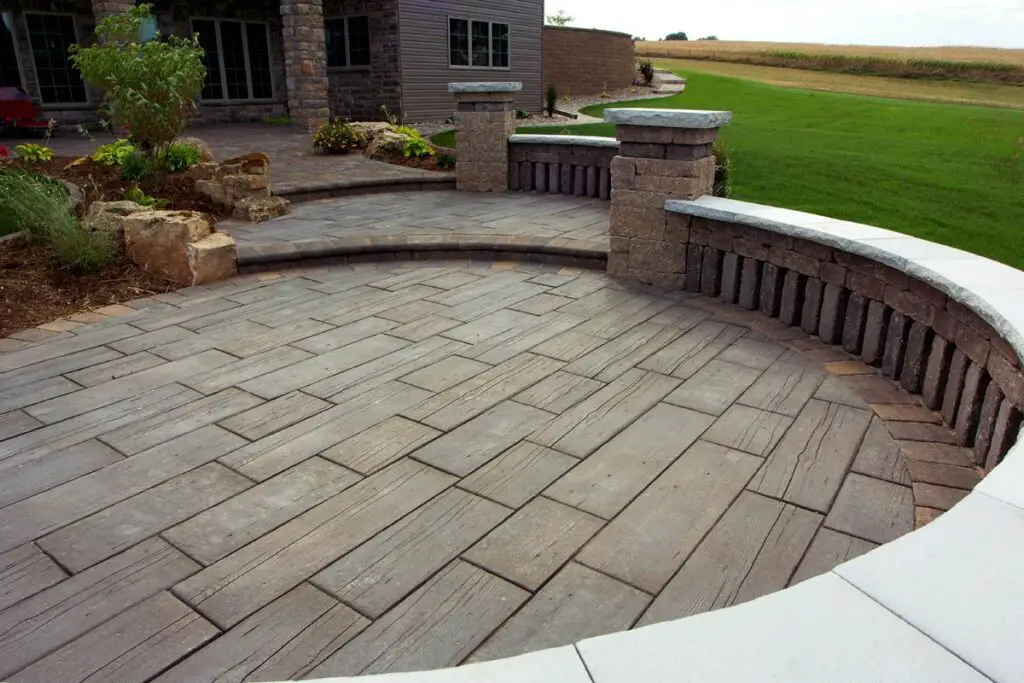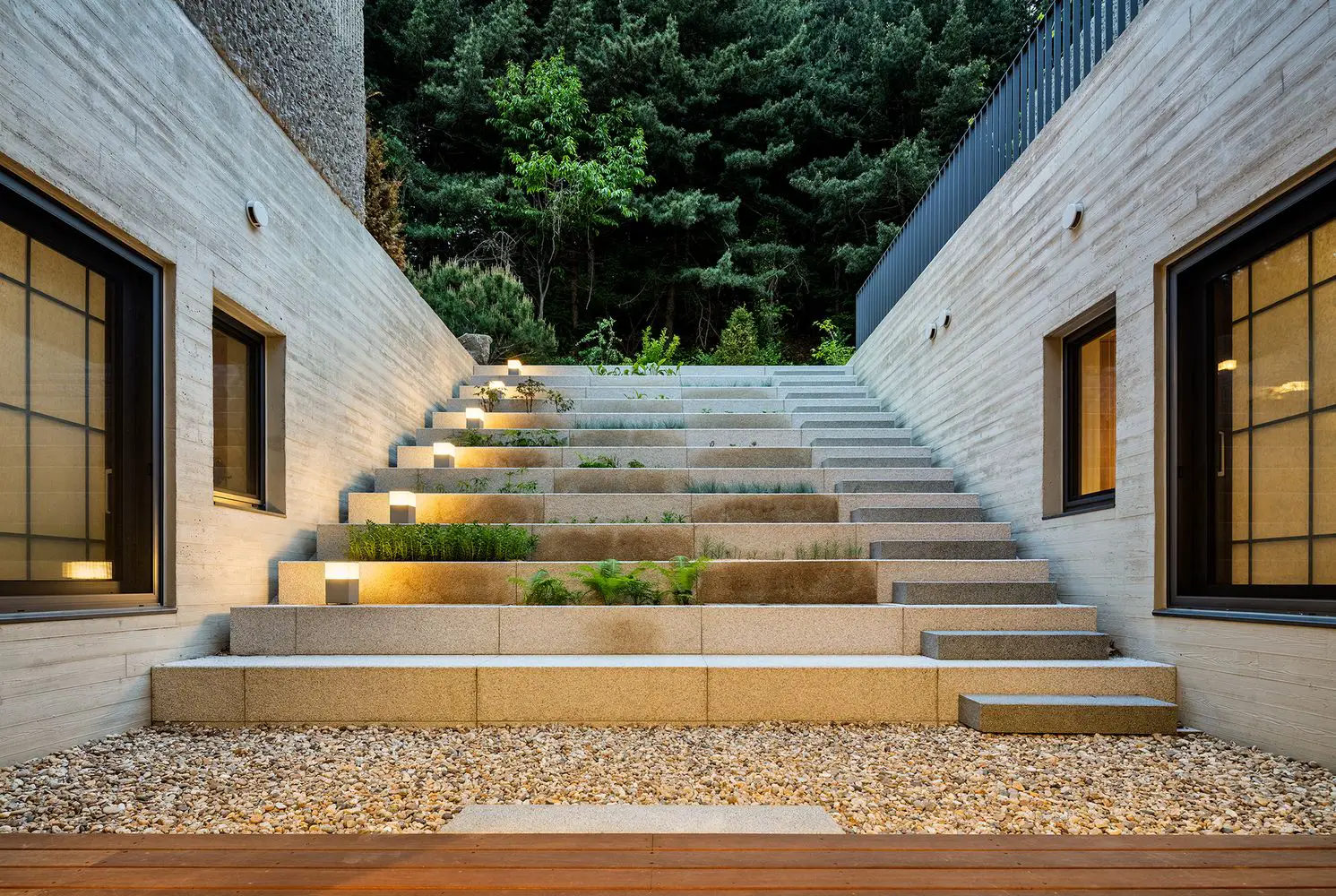Should A Concrete Patio Be Anchored To House Foundation
Introduction
Should A Concrete Patio Be Anchored To House Foundation: A concrete patio may add value to a property by providing a multipurpose outside place for entertaining, relaxing, and enjoying the outdoors. A common question when adding a concrete patio is whether it should be secured to the home foundation. This choice can affect the patio’s stability, durability, and safety.
There are several factors to consider when deciding whether or not to anchor a concrete patio private to the house foundation. One of the main considerations is the climate and soil conditions in the area where the patio will be installed. In areas with unstable soil or frequent freeze-thaw cycles, anchoring the patio to the foundation can help prevent shifting and cracking. Additionally, if the patio is located in an area prone to high winds or seismic activity, anchoring it to the foundation can provide added stability and prevent damage during extreme weather events.
A thorough evaluation of the project’s needs should determine whether to attach a concrete patio to the house foundation. Professional contractors and engineers can assist install the patio safely and efficiently. Homeowners can enjoy their concrete patio for years by considering these considerations and making an informed decision.

Should a patio touch the house?
Should a patio touch the house?
Designing a patio involves deciding whether it should touch the home or be independent. This decision might affect the patio’s functionality and appearance, as well as the house. Whether a patio touches the house depends on various things.
Having a patio that touches the house is convenient. The patio becomes an extension of the living space when connected to the house. This makes the terrace easier to utilize for dining, entertaining, and relaxing. It also makes it easy to shift between indoor and outdoor locations, which is useful for holding parties or supervising young children.
A patio that touches the house is cost-effective. As an extension of the home, the patio can share walls, roof, and foundation. Reduced construction expenses can make the patio more affordable. A patio that touches the house can also save energy by shading the home or buffering extreme weather.
There are also certain things to consider while building a patio that touches the home. Water damage is a major worry. Water can seep into the home through a poorly planned patio, causing structural damage and mold growth.
Can you pour concrete next to house foundation?
Yes, it is possible to pour concrete next to a house foundation. However, there are certain factors that need to be considered before doing so. Pouring concrete next to a house foundation can be a practical solution for various reasons, such as creating a patio or walkway, extending the foundation, or adding a basement window well.
One important consideration when pouring concrete next to a house foundation is the potential impact on the foundation itself. It is crucial to ensure that the concrete does not cause any damage to the existing foundation. This can be achieved by taking certain precautions, such as providing proper drainage and ensuring that the concrete is poured at the correct depth and angle.
Another factor to consider is the proximity of the concrete to any existing utilities or underground structures. It is important to locate and mark any utility lines or underground structures before pouring concrete to avoid any potential damage. This can be done by contacting the local utility companies or hiring a professional to locate and mark the utilities.
Additionally, it is important to consider the type of concrete that will be used for the project. There are different types of concrete available, each with its own set of properties and uses. The type of concrete used will depend on the specific requirements of the project, such as the desired strength, durability, and appearance.
Lastly, it is essential to follow proper construction practices and guidelines when pouring concrete next to a house foundation. This includes preparing the site properly, ensuring proper curing and drying of the concrete, and taking necessary safety precautions. It is recommended to consult with a professional contractor or engineer to ensure that the project is done correctly and meets all necessary requirements.
What is the best base for a concrete patio?
The finest concrete patio base depends on soil, climate, and use.
One of the most typical concrete patio bases is crushed gravel. The patio installation requires excavating and filling the area with compacted gravel. The concrete slab doesn’t sink or shift since the gravel provides a sturdy base. It also provides sufficient drainage to prevent patio water accumulating.
Sand bases are another concrete patio base choice. This requires excavation and sand filling. The sand levels the concrete slab and distributes weight. However, a sand basis may cause uneven settling and concrete cracking in places with poor drainage or heavy clay soils.
For stronger concrete patios, a crushed stone base may be needed. Excavation and crushed stone filling are required. Crushed stone stabilizes the concrete slab, making it perfect for soft or unstable soils. To avoid patio settling, crushed stone must be properly compacted.
What do you put between concrete and house?
When it comes to building a house, there are several important components that need to be considered. One of these components is the material used for the foundation, which is typically made of concrete. Concrete is a strong and durable material that provides a solid base for the structure of a house. However, there is something that needs to be placed between the concrete and the house itself to ensure proper insulation and protection.
The material that is commonly used between the concrete and the house is called a vapor barrier. A vapor barrier is a thin layer of material that is placed on top of the concrete before the house is built. Its main purpose is to prevent moisture from seeping into the house from the ground. Moisture can cause a variety of problems, such as mold growth, rotting of wood, and damage to the overall structure of the house. Therefore, it is essential to have a vapor barrier in place to protect the house from these potential issues.
There are different types of vapor barriers available, including plastic sheets, foil-faced insulation, and spray-on coatings. The choice of vapor barrier depends on various factors, such as the climate, soil conditions, and local building codes. Regardless of the type used, the vapor barrier should be installed properly to ensure its effectiveness. It should be placed directly on top of the concrete, covering the entire surface area. Additionally, the seams and edges of the vapor barrier should be sealed to prevent any gaps or openings.
Do you need a gap between patio and house?
Yes, it is important to have a gap between a patio and a house. This gap serves several purposes and can help prevent potential issues in the future.
Firstly, having a gap between the patio and the house allows for proper drainage. When it rains or when water is used to clean the patio, the water needs a place to go. Without a gap, the water can accumulate against the house, leading to potential water damage and moisture issues. By having a gap, the water can flow away from the house and prevent any damage or dampness.
Secondly, a gap between the patio and the house can help prevent the transfer of heat. During hot summer months, the sun can heat up the patio surface, and without a gap, this heat can transfer to the house. This can result in increased indoor temperatures and the need for more cooling, leading to higher energy bills. By having a gap, the heat can dissipate and reduce the impact on the house, helping to maintain a comfortable indoor environment.
Additionally, a gap between the patio and the house can act as a buffer zone. It can help prevent any potential damage to the house caused by movement or settling of the patio. Over time, the ground may shift or settle, and having a gap allows for some flexibility. This can help prevent any cracks or damage to the foundation or walls of the house, saving homeowners from costly repairs.
Secondly, anchoring the patio to the house foundation helps to prevent water damage. When properly sealed and connected, the patio acts as a barrier, preventing water from seeping into the foundation and potentially causing structural issues. This is particularly crucial in regions with heavy rainfall or high water tables.
Are there any potential drawbacks or risks associated with anchoring a concrete patio to the house foundation?
There are some good things about anchoring a concrete patio to the house base, but you should also think about the bad things and risks that could come with it. For example, there is a chance that the house base could be damaged. Before you anchor the patio, you need to make sure that the base can handle the extra weight and stress. Damage to the foundation or cracks in the foundation can happen if the foundation isn’t properly strengthened or if the patio is too heavy.
Water damage is another risk that could happen. When you anchor a patio to the base of your house, you make a hole in the ground where water can get in. Water can get in through gaps or cracks in the patio or if it isn’t properly sealed. This can damage both the patio and the floor. As a result, mold may grow, wood may rot, and the base may become unstable.
It’s also important to think about how much it will cost to fix and maintain a concrete patio that is anchored to the house base over time. If any problems happen, like cracks or shifting, it might need to be fixed by an expert. This can be pricey and take a lot of time, especially if the porch needs to be taken down and put back together from scratch.
What are the recommended methods or techniques for anchoring a concrete patio to the house foundation?
There are numerous ways to anchor a concrete patio to the home foundation for a secure and long-lasting connection. Steel anchor bolts buried in the concrete foundation are a standard solution. These bolts are fastened to the terrace with metal plates or brackets. This approach securely connects the patio to the home foundation.
Common methods include concrete footings. These footings are massive concrete blocks put straight into the earth to support the patio. Metal connectors or brackets join the patio to the footings. This approach supports and stabilizes fragile soil, making it effective.
The method utilized to anchor a concrete patio to the house foundation depends on elements such patio size and weight, soil type, and local building standards. Therefore, engage a competent contractor or engineer who can assess your project’s needs and offer the best anchoring option.
How does anchoring a concrete patio to the house foundation affect the overall stability and durability of the patio?
Anchoring a concrete patio to the house foundation has several benefits that contribute to the overall stability and durability of the patio. Firstly, it helps to prevent shifting or movement of the patio over time. By securely attaching the patio to the foundation, it reduces the risk of cracks or uneven settling that can occur due to soil movement or changes in temperature. This ensures that the patio remains level and structurally sound for a longer period of time.
Additionally, anchoring the patio to the house foundation enhances its resistance to external forces such as wind or seismic activity. The connection between the patio and the foundation creates a unified structure, distributing the load and forces evenly. This helps to minimize the risk of damage or collapse during extreme weather conditions or natural disasters.
Are there any specific building codes or regulations that need to be followed when anchoring a concrete patio to the house foundation?
Yes, there are specific building codes and regulations that need to be followed when anchoring a concrete patio to the house foundation. These codes and regulations vary depending on the location and jurisdiction, so it is important to consult with local authorities or a professional contractor to ensure compliance.
One common requirement is the use of proper materials and techniques for anchoring the patio. This may include using specific types of anchors or fasteners that are designed to withstand the forces and loads placed on the patio. Additionally, there may be guidelines on the depth and spacing of the anchors to ensure adequate stability.
Another important consideration is the need for proper drainage and water management. Building codes often require the installation of a drainage system to prevent water from pooling or seeping into the foundation. This can help prevent damage to both the patio and the house foundation over time.

Conclusion
A concrete patio is a popular choice for homeowners looking to enhance their outdoor living space. It provides a durable and low-maintenance surface that can withstand the elements and heavy foot traffic. However, when it comes to installing a concrete patio, one important consideration is whether it should be anchored to the house foundation.
There are several factors to consider when deciding whether to anchor a concrete patio to the house foundation. One of the main reasons to anchor a patio is to prevent it from shifting or settling over time. By anchoring the patio to the house foundation, you can ensure that it remains stable and level, even in areas with unstable soil or high winds.
Another reason to anchor a concrete patio to the house foundation is to prevent water damage. When a patio is not properly anchored, water can seep between the patio and the house, causing damage to both the patio and the foundation. By anchoring the patio, you can create a watertight seal that prevents water from entering the space between the patio and the house.
Consulting with a professional contractor can help ensure that the patio is properly anchored and will provide years of enjoyment and durability.” Learn why it is important to anchor a concrete patio to your house foundation for stability and durability. Discover the benefits and steps involved in properly securing your patio to ensure long-lasting enjoyment and prevent potential damage.








